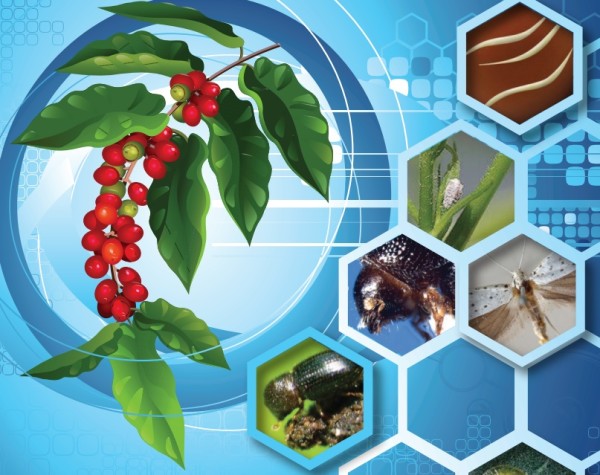From la roya to borer beetles to nematodes, the numbers of natural threats to the coffee farming industry are reaching unprecedented levels. While the effects of these threats and others on farming communities have been a regular topic of this site, the global economic community has been slow to take notice, especially as it sees a supply glut continuing to drop green coffee prices worldwide.
That said, a new white paper from INTL FCStone, a Fortune 500 company that provides market and commodities analysis, may help shine some light for the larger coffee trading community.
(more: Is the Coffee Business Broken? Thoughts from Let’s Talk Coffee)
Written by INTLFCStone senior editor Alexis Rubinstein, the 12-page report called “Coffee Pests and Diseases” provides an overview of a number of the most pressing threats to coffee production, including analysis on borer beetles, green scale, la roya (leaf rust), nematodes, mealybugs, leaf miners, mites, white stem borers, CBD, cercospora and coffee wilt disease. Rubinstein leads the piece with the following:
Coffee is in danger. Consumption is rising, and production, so far, is keeping up with demand. But before coffee ends up as liquid in the cup, it begins as an agricultural product, vulnerable to damaging pests and devastating outbreaks of diseases. As the global price of coffee declines, producers struggle to afford proper preemptive measures. Trees that have produced quality beans for generations are being destroyed, livelihoods are being threatened and Mother Nature seems to be fighting against the sustainability of the industry.
(more: Farmers Struggle as Coffee Prices Continue Dramatic Downward Slide, ICO Says)
Though the paper does not go into exceptional detail regarding farming practices, capital procurement solutions or advanced agronomics, it does provide a nice overview of some of the industry’s current challenges, treating the issue with the gravity it deserves.
Click here for a full version of the white paper (note: requires free registration).
Nick Brown
Nick Brown is the editor of Daily Coffee News by Roast Magazine.







Comment